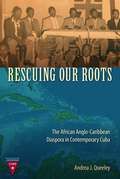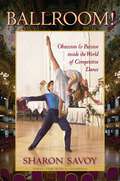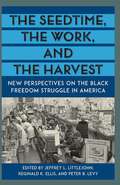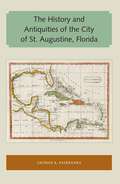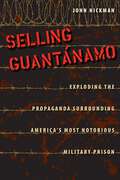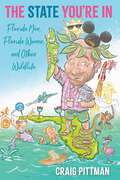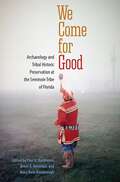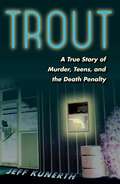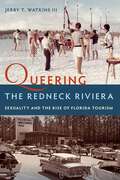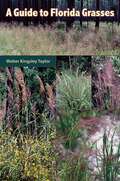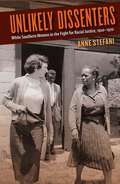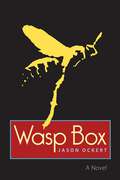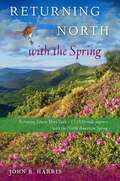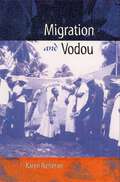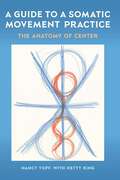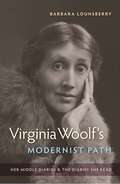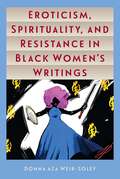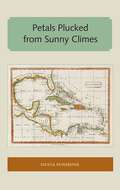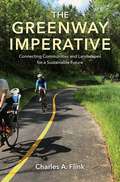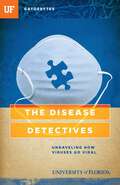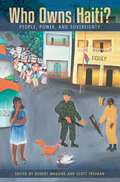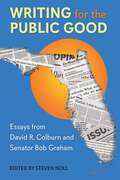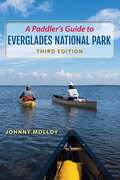- Table View
- List View
Rescuing Our Roots: The African Anglo-Caribbean Diaspora in Contemporary Cuba (Contemporary Cuba)
by Andrea J. Queeley"Contributes new perspectives on historical black identity formation and contemporary activism in Cuba."--Choice "Provides invaluable insight into the histories and lives of Cubans who trace their origins to the Anglo-Caribbean."--Robert Whitney, author of State and Revolution in Cuba: Mass Mobilization and Political Change, 1920-1940 "Adds a missing piece to the existing literature about the renewal of black activism in Cuba, all the while showing the links and fractures between pre- and post-1959 society."--Devyn Spence Benson, Davidson College In the early twentieth century, laborers from the British West Indies immigrated to Cuba, attracted by employment opportunities. The Anglo-Caribbean communities flourished, but after 1959, many of their cultural institutions were dismantled: the revolution dictated that in the name of unity there would be no hyphenated Cubans. This book turns an ethnographic lens on their descendants who--during the Special Period in the 1990s--moved to "rescue their roots" by revitalizing their ethnic associations and reestablishing ties outside the island. Based on Andrea J. Queeley's fieldwork in Santiago and Guantánamo, Rescuing Our Roots looks at local and regional identity formations as well as racial politics in revolutionary Cuba. Queeley argues that, as the island experienced a resurgence in racism due in part to the emergence of the dual economy and the reliance on tourism, Anglo-Caribbean Cubans revitalized their communities and sought transnational connections not just in the hope of material support but also to challenge the association between blackness, inferiority, and immorality. Their desire for social mobility, political engagement, and a better economic situation operated alongside the fight for black respectability. Unlike most studies of black Cubans, which focus on Afro-Cuban religion or popular culture, Queeley's penetrating investigation offers a view of strategies and modes of black belonging that transcend ideological, temporal, and spatial boundaries. A volume in the series Contemporary Cuba, edited by John M. Kirk
Ballroom!: Obsession and Passion inside the World of Competitive Dance
by Sharon SavoyDreams are made and broken every year in the dazzling Empress Ballroom at the Winter Gardens in Blackpool, England. Fierce competition, brutal politics, and stunning artistry are all on the program at the world's most prestigious competition, known to ballroom dance enthusiasts simply as "Blackpool."Sharon Savoy's lifelong love affair with dance manifested itself early on. At the tender age of 16 she left home to train under George Balanchine at the School of American Ballet in New York. An accomplished ballerina, her desire to dance more expressively and with a partner led her on the path that culminated on the competition ballroom circuit. There, her passion and artistry led her to become a four-time champion in exhibition style. But, as with all obsessions, her success came with a cost.In this spellbinding book, Savoy offers a backstage pass to a world where rhinestones and high heels accompany explosive athleticism and staggering talent. With emotionally absorbing and energy-packed prose, she provides an insider's close-up view of all the players who compose this glamorous world that is part dance, part sport, and part art.
The Seedtime, the Work, and the Harvest: New Perspectives on the Black Freedom Struggle in America (Southern Dissent)
by Jeffrey L. Littlejohn, Reginald K. Ellis and Peter B. LevyThis volume's contributors expand the chronology and geography of the black freedom struggle beyond the traditional emphasis on the Jim Crow South and the years between 1954 and 1968. Beginning as far back as the nineteenth century, and analyzing case studies from southern, northern, and border states, the essays in The Seedtime, the Work, and the Harvest incorporate communities and topics not usually linked to the African American civil rights movement. The collection opens with a biographical sketch of Thomas DeSaille Tucker, an educational pioneer who served as the first president of Florida State Normal and Industrial School for Colored Students. It then highlights the work of black women, including Bostonian publisher Josephine St. Pierre Ruffin, who defied local governments during the Progressive Era by disseminating medical information and providing access to medical professionals. Next, the collection explores the life and work of Norfolk civil rights attorney James F. Gay, who helped to democratize the political establishment in Virginia’s largest city but became a victim of his own success. The collection then moves to York, Pennsylvania, to examine a 1969 riot that went mostly unnoticed until the town's mayor was charged--more than thirty years later--with the riot-related murder of Lillie Belle Allen. Also featured is an essay examining the Student Nonviolent Coordinating Committee's "Food for Freedom" campaign that aimed to complement voter registration work in Mississippi by providing everyday sustenance to African Americans. Addressing more recent issues, this volume considers the politics of public memory in Baltimore, Maryland, a city divided by racial "riots" in 1968 and in 2015. It then examines the Black Lives Matter movement that gained international attention for its response to Michael Brown's death at the hands of police in Ferguson, Missouri, as well as the Sandra Bland Movement inspired by the arrest of Bland and her subsequent death in the Waller County jail in rural Texas. These chapters connect the activism of today--shaped in so many ways by social media, student activism, and grassroots organization--to a deeply historical, wide-ranging fight for equality.
The History and Antiquities of the City of St. Augustine, Florida: Founded A. D. 1565 (Florida and the Caribbean Open Books Series)
by George R. FairbanksThe books in the Florida and the Caribbean Open Books Series demonstrate the University Press of Florida’s long history of publishing Latin American and Caribbean studies titles that connect in and through Florida, highlighting the connections between the Sunshine State and its neighboring islands. Books in this series show how early explorers found and settled Florida and the Caribbean. They tell the tales of early pioneers, both foreign and domestic. They examine topics critical to the area such as travel, migration, economic opportunity, and tourism. They look at the growth of Florida and the Caribbean and the attendant pressures on the environment, culture, urban development, and the movement of peoples, both forced and voluntary.The Florida and the Caribbean Open Books Series gathers the rich data available in these architectural, archaeological, cultural, and historical works, as well as the travelogues and naturalists’ sketches of the area prior to the twentieth century, making it accessible for scholars and the general public alike.The Florida and the Caribbean Open Books Series is made possible through a grant from the National Endowment for the Humanities and the Andrew W. Mellon Foundation, under the Humanities Open Books program.
Selling Guantánamo: Exploding the Propaganda Surrounding America's Most Notorious Military Prison
by John HickmanIn the aftermath of 9/11, few questioned the political narrative provided by the White House about Guantánamo and the steady stream of prisoners delivered there from half a world away. The Bush administration gave various rationales for the detention of the prisoners captured in the War on Terror: they represented extraordinary threats to the American people, possessed valuable enemy intelligence, and were awaiting prosecution for terrorism or war crimes. Both explicitly and implicitly, journalists, pundits, lawyers, academics, and even released prisoners who authored books about the island prison endorsed elements of the official narrative. In Selling Guantánamo, John Hickman exposes the holes in this manufactured story. He shines a spotlight on the critical actors, including Rumsfeld, Cheney, and President Bush himself, and examines how the facts belie the “official” accounts. He chastises the apologists and the critics of the administration, arguing that both failed to see the forest for the trees.
The State You're In: Florida Men, Florida Women, and Other Wildlife
by Craig PittmanJump into the wacky, wild world of Florida For more than 30 years, investigative journalist and New York Times bestselling author Craig Pittman has chronicled the wildest stories Florida has to offer. Featuring a selection of columns that have appeared in the Tampa Bay Times and other outlets throughout Pittman’s career, this book highlights just how strange and wonderful Florida can be. With a folksy style, an eye for the absurd, and a passion for the history and environment of his home state, Pittman describes some of Florida’s oddest wildlife as well as its quirkiest people. The State You’re In includes a love story involving the most tattooed woman in the world, a deep dive into the state’s professional mermaid industry, and an investigation of a battle between residents of a nudist resort and the U.S. Postal Service. Pittman introduces readers to a who’s who of Florida crime fiction, a what’s what of exotic animals, and an array of beloved places he’s seen change rapidly in his lifetime. Many of these stories are funny, some are serious, and several offer rare insights into the heart of the Sunshine State. For Pittman, Florida is both inspiring and dangerous—an “evolutionary test” for those who live in it. Together these pieces paint a complex picture of a fascinating state longing for an identity beyond palm trees and punchlines.
We Come for Good: Archaeology and Tribal Historic Preservation at the Seminole Tribe of Florida
by Paul N. Backhouse, Brent R. Weisman, and Mary Beth RosebroughAs indigenous populations are invited to participate in cultural heritage identification, research, interpretation, management, and preservation, they are faced with a variety of challenges, questions that are difficult to answer, and demands that must be carefully navigated. We Come for Good describes the development and operations of the Tribal Historic Preservation Office (THPO) of the Seminole Tribe of Florida as an example of how tribes can successfully manage and retain authority over the heritage of their respective cultures. With Native voices front and center, this book demonstrates ways THPOs can work within federal and tribal governments to build capacity and uphold tribal values--core principles of a strong tribal historic preservation program. The authors also offer readers one of the first attempts to document Native perspectives on the archaeology of native populations.
Trout: A True Story of Murder, Teens, and the Death Penalty
by Jeff KunerthOn a cool Pensacola night in January 1991, just a few minutes before midnight, three teenagers pulled up to the Trout Auto Parts store. Patrick Bonifay, his body coursing with adrenaline, entered the store clad in a ski mask carrying a loaded gun, intent on carrying out a poorly laid plan. Little did he know that it was his life--as well as the lives of his companions--that was about to be forever changed.Bonifay, Clifford Barth, and Eddie Fordham were hired to kill Daniel Wells by Robin Archer, who blamed Wells for losing his job nine months prior. The plan was orchestrated by the then-twenty-seven-year-old Archer, who allegedly promised his seventeen-year-old nephew, Patrick, a suitcase full of money after the job was done. But Wells had called in sick that night, and an innocent man was covering his shift.In this shocking and thought-provoking volume, Jeff Kunerth recounts the events of that fateful night, the swift investigation of the murder, the trials and sentencing of the teens, and their subsequent lives within the Florida court and penal systems. Kunerth uses the story of the Trout Auto Parts murder and the lives of these boys to explore varying aspects of troubled adolescence, impulsive actions lasting but moments, and the national trend of trying juveniles as adults in court.They were boys every teenager can identify with and circumstances every parent fears. Their story provides a disturbing, sad, and compelling inside look at the dynamics of individuals--not yet adults, but no longer children--who commit senseless, impulsive crimes. Trout is that rare book that continues to haunt you long after you've finished reading it.
Queering the Redneck Riviera: Sexuality and the Rise of Florida Tourism
by Jerry T. Watkins IIIQueering the Redneck Riviera recovers the forgotten and erased history of gay men and lesbians in North Florida, a region often overlooked in the story of the LGBTQ experience in the United States. Jerry Watkins reveals both the challenges these men and women faced in the years following World War II and the essential role they played in making the Emerald Coast a major tourist destination. In a state dedicated to selling an image of itself as a “family-friendly” tropical paradise and in an era of increasing moral panic and repression, queer people were forced to negotiate their identities and their places in society. Watkins re-creates queer life during this period, drawing from sources including newspaper articles, advertising and public relations campaigns, oral history accounts, government documents, and interrogation transcripts from the state’s Johns Committee. He discovers that postwar improvements in transportation infrastructure made it easier for queer people to reach safe spaces to socialize. He uncovers stories of gay and lesbian beach parties, bars, and friendship networks that spanned the South. The book also includes rare photos from the Emma Jones Society, a Pensacola-based group that boldly hosted gatherings and conventions in public places. Illuminating a community that boosted Florida’s emerging tourist economy and helped establish a visible LGBTQ presence in the Sunshine State, Watkins offers new insights about the relationships between sexuality, capitalism, and conservative morality in the second half of the twentieth century.
Tales from the 5th Street Gym: Ali, the Dundees, and Miami's Golden Age of Boxing
by Ferdie PachecoIn its forty-year existence, the 5th Street Gym housed the training grounds for three of the greatest fighters the sport has ever known--Muhammad Ali, George Foreman, and Sugar Ray Leonard--and became the locus for a grand total of fourteen world champions. The site was also a magnet for a wide range of international celebrities including Joe Louis, Rocky Marciano, Jackie Gleason, Frank Sinatra, the Beatles, and Sylvester Stallone, who were all absorbed into the gym's legend. The 5th Street Gym's beginnings trace back to 1950, when Chris Dundee, along with his brother Angelo, began promoting big-time boxing at Miami Beach.Tales from the 5th Street Gym includes a wealth of never-before-seen photographs and is the first to chronicle the fascinating history of the 5th Street Gym from one of its insiders--Dr. Ferdie Pacheco--with crucial contributions from Tom Archdeacon, Angelo Dundee, Suzanne Dundee Bonner, Enrique Encinosa, Howard Kleinberg, Ramiro Ortiz, Edwin Pope, Bob Sheridan, and Budd Schulberg. Discover the secret history of one of boxing's most hallowed grounds, as Pacheco recalls the rise, heyday, and fall of the "sweet science" at Miami Beach.
A Guide to Florida Grasses
by Walter Kingsley TaylorA Guide to Florida Grasses offers an introduction to this vital and frequently neglected plant family. This richly illustrated reference includes complete details pertaining to the identification, structure, distribution, and uses of more than 200 of the most common grasses found in Florida and nearby states. With over 500 color images--some picturing species that have never been described with a published image--correctly identifying and selecting members of this important plant family has never been easier. Environmentalists, hikers, and nature lovers can take this book into the field or enjoy it at home. A Guide to Florida Grasses will be accessible and invaluable to professional botanists, commercial landscapers, homeowners, and plant enthusiasts alike.
Unlikely Dissenters: White Southern Women in the Fight for Racial Justice, 1920–1970
by Anne Stefani"An eye-opening account of southern white women who worked to challenge racial segregation. . . . Highly recommended."--Choice "Brings to life a small but important group of women who worked hard to change the South. . . . It will help to more fully explicate the motivation and experiences of women willing to challenge expected behavior in order to bring racial justice to the region and the nation."--American Historical Review "Stefani does a stellar job of chronicling southern white women?s confrontation with segregation and white supremacy. . . . A welcome contribution to the growing historiography of little-known civil rights heroines."--North Carolina Historical Review "An intriguing narrative of women whose lives were dramatically shaped by their work in such actions as the Little Rock Central High School desegregation campaign in 1957, the Albany movement in 1961, and Freedom Summer in 1964."--Journal of American History "Extensively researched. . . . A valuable resource for anyone studying white southern women, women?s civil rights activism, and women?s activism across race, religion, and time."--Journal of Southern History "Stefani redefines the proverbial 'southern lady' with a close look at over fifty white, anti-racist women. Concentrating on traits that linked these women across two generations, Unlikely Dissenters provides the first comprehensive study of how these southern women both employed and destroyed a stereotype."--Gail S. Murray, editor of Throwing Off the Cloak of Privilege "Presents a sophisticated and well-supported argument that women such as Lillian Smith, Virginia Durr, and Anne Braden challenged white supremacy at its core while knowing that they would be regarded as traitors to their race, region, and gender in doing so."--Peter B. Levy, author of Civil War on Race Street Between 1920 and 1970, a small but significant number of white women confronted the segregationist system in the American South, ultimately contributing to its demise. For many of these reformers, the struggle for African American civil rights was akin to their own complex process of personal emancipation from gender norms. As part of the white community, they wrestled with guilt as members of the "oppressor" group. Yet as women in a patriarchal society, they were also "victims." This paradoxical double identity enabled them to develop a special brand of activism that combatted white supremacy while emancipating them from white patriarchy. Using the 1954 Brown decision as a pivot, Anne Stefani examines and compares two generations of white women who spoke out against Jim Crow while remaining deeply attached to their native South. She demonstrates how their unique grassroots community-oriented activism functioned within--and even used to its advantage--southern standards of respectability.
Wasp Box
by Jason Ockert“Wasp Box is a thrilling debut that will no doubt soon garner lots of positive attention from readers and critics alike. It is that rare novel that manages to be profound while also being profoundly entertaining.” – Wraparound South “What develops in Wasp Box is horrific, beautiful, bizarre, poignant and mesmerizing. The sensory and visceral detail will cause readers to claw at their legs and necks, jam fingers into their ears, or hop on one foot to shake from the head what may lurk inside. Wasp Box portrays families at their best and worst, strongest and weakest, closest and most distant. Above all, it offers a portrait of the resilience and reliance necessary to survive.” – The Rumpus “Jason Ockert's first novel is strangely magnificent. Deep down, Wasp Box is a love story: A soldier searches for a way to come home to his sweetheart, a man attempts to be a better father to his son, a quiet boy and an odd girl find companionship in each other and an old man struggles to cope without his deceased wife. But it's also a story filled with a quiet, lurking dread. It touches on the fear that lives inside all of us, a fear that literally surfaces when a soldier returned from war births a swarm of parasitic wasps that have been nesting in his brain, feeding on his insides. Are you cringing yet? Good. Those are just the first two pages.” – Bookslut When a soldier returning home to a small New York town inadvertently transports an invasive species of deadly parasitic wasps, he sets off a frightening chain of events that throws an entire community into an unpredictable crisis. Escalating in its psychological, emotional, and narrative intensity, Ockert’s gripping first novel examines the choices individuals make in the face of danger, the limits of personal strength, and the value of family loyalty when the familiar world unravels.
Returning North with the Spring
by John R HarrisAt winter's end in 1947, driven by the devastating loss of a son killed in World War II, naturalist Edwin Way Teale followed the dawning spring season northward in an amazing 17,000-mile odyssey from the Everglades to Maine. He wrote about the adventure in North with the Spring. Its sequel Wandering Through Winter won the Pulitzer Prize.Retracing Teale's route, writer John Harris reveals a vastly changed natural world. In Returning North with the Spring, he stops at the very places where Teale once stood, trekking through the Okefenokee wetland, the Great Smoky Mountains, the Great Dismal Swamp, the New Jersey Pine Barrens, and Cape Cod. He is stunned to see how climate change, invasive species, and other factors have affected the landscapes and wildlife. Yet he also discovers that many of the sites Teale described have been newly "rewilded" or permanently protected by the government.Homage to the past, report on the present, glimpse into the future--this book honors what has been lost in the years since Teale's famous journey and finds hope in the small tenacities of nature.
Migration and Vodou (New World Diasporas)
by Karen E. RichmanThis book and accompanying compact disc provide a rare excursion in the innovative ways a community of Haitian migrants to South Florida has maintained religious traditions and familial connections. It demonstrates how religion, ritual, and aesthetic practices affect lives on both sides of the Caribbean, and it debunks myths of exotic and primitive vodou (often spelled "voodoo"), which have long been used against Haitians. As Karen Richman shows, Haitians at home and in migrant settlements make ingenious use of audio and video tapes to extend the boundaries of their ritual spaces and to reinforce their moral and spiritual anchors to one another. The book and CD were produced in collaboration to give the reader intimate access to this new expressive media. Sacred songs are recorded on tapes and circulated among the communities. Migrants are able to hear not only the performance sounds--drumming, singing, and chatter--but also a description, as narrators tell of offerings, sacrifices, prayers, and the exchange of possessions. Spirits who inhabit the bodies of ritual actors are aware of the recording devices and personally address the absent migrants, sometimes warning them of their financial obligations to family members in Haiti. The migrants’ dependence on their home village is dramatically reinforced while their economic independence is restricted. Using standard ethnographic methods, Richman’s work illuminates the connections among social organization, power, production, ritual, and aesthetics. With its transnational perspective, it shows how labor migration has become one of Haiti’s chief economic exports. A volume in the series New World Diasporas, edited by Kevin A. Yelvington
A Guide to a Somatic Movement Practice: The Anatomy of Center
by Nancy TopfAn introduction to embodied movement through the work of a dance education pioneer In this introduction to the work of somatic dance education pioneer Nancy Topf (1942–1998), readers are ushered on a journey to explore the movement of the body through a close awareness of anatomical form and function. Making available the full text of Topf’s The Anatomy of Center for the first time in print, this guide helps professionals, teachers, and students of all levels integrate embodied, somatic practices within contexts of dance, physical education and therapy, health, and mental well-being. Hetty King, a movement educator certified in the Topf Technique®, explains how the ideas in this work grew out of Topf’s involvement in developing Anatomical Release Technique—an important concept in contemporary dance—and the influence of earlier innovators Barbara Clark and Mabel Elsworth Todd, founder of the approach to movement known as “ideokinesis.” Featuring lessons written as a dialogue between teacher, student, and elements of the body, Topf’s material is accompanied by twenty-one activities that allow readers to use the book as a self-guided manual. A Guide to a Somatic Movement Practice is a widely applicable entry point into the tradition of experiential anatomy and its mindful centering of the living, breathing body.
Virginia Woolf's Modernist Path: Her Middle Diaries and the Diaries She Read
by Barbara LounsberryChoice Outstanding Academic Title In this second volume of her acclaimed study of Virginia Woolf 's diaries, Barbara Lounsberry traces the English writer's life through the thirteen diaries she kept from 1918 to 1929--what is often considered Woolf’s modernist "golden age." During these interwar years, Woolf penned many of her most famous works, including Mrs. Dalloway, To the Lighthouse, Orlando, and A Room of One's Own. Lounsberry shows how Woolf's writing at this time was influenced by other diarists--Anton Chekhov, Katherine Mansfield, Jonathan Swift, and Stendhal among them--and how she continued to use her diaries as a way to experiment with form and as a practice ground for her evolving modernist style.Through close readings of Woolf 's journaling style and an examination of the diaries she read, Lounsberry tracks Woolf 's development as a writer and unearths new connections between her professional writing, personal writing, and the diaries she was reading at the time. Virginia Woolf's Modernist Path offers a new approach to Woolf 's biography: her life as she marked it in her diary from ages 36 to 46.
Eroticism, Spirituality, and Resistance in Black Women's Writings
by Donna Aza Weir-Soley"Provocative . . . articulates the importance of embodied, erotic spirituality to black female subjectivity and empowerment."--Tulsa Studies in Women's Literature "Sets out to reclaim the right of black women to their sexual and erotic expression untainted by the stereotypes and disparagements that have historically confined them."--African American Review "Captures one of the most challenging concerns of scholars who engage black women's literature, culture, and theory: the ongoing quest to locate a form of black female sexual agency that neither withers in the chilly lake of sexual repression nor explodes in the heat of hypersexual stereotypes."--MELUS: Journal of the Society for the Study of the Multi-Ethnic Literature of the United States "Successfully undertakes an analysis of how black women writers have used overlapping narrative depictions of sexuality and spirituality to recast the denigrated black female body and rewrite an empowered and fully actualized black female subject."--Candice M. Jenkins, author of Private Lives, Proper Relations: Regulating Black Intimacy "Weir-Soley speaks with an authority that comes from real knowledge of, investment in, and attention to the details of the African cosmologies and textual complexities she unearths."--Carine Mardorossian, SUNY-Buffalo "The most original and significant contributions are the often brilliant readings of Morrison, Adisa, and Danticat. The work is riveting, both methodologically and critically."--Leslie Sanders, York University Western European mythology and history tend to view spirituality and sexuality as opposite extremes. But sex can be more than a function of the body and religion more than a function of the mind, as exemplified in the works and characters of such writers as Zora Neale Hurston, Toni Morrison, Opal Palmer Adisa, and Edwidge Danticat. Donna Weir-Soley builds on the work of previous scholars who have identified the ways that black women's narratives often contain a form of spirituality rooted in African cosmology, which consistently grounds their characters' self-empowerment and quest for autonomy. What she adds to the discussion is an emphasis on the importance of sexuality in the development of black female subjectivity, beginning with Hurston's Their Eyes Were Watching God and continuing into contemporary black women's writings. Writing in a clear, lucid, and straightforward style, Weir-Soley supports her thesis with close readings of various texts, including Hurston's Their Eyes Were Watching God and Morrison's Beloved. She reveals how these writers highlight the interplay between the spiritual and the sexual through religious symbols found in Voudoun, Santeria, Condomble, Kumina, and Hoodoo. Her arguments are particularly persuasive in proposing an alternative model for black female subjectivity.
Petals Plucked from Sunny Climes (Florida and the Caribbean Open Books Series)
by Silvia SunshineThe books in the Florida and the Caribbean Open Books Series demonstrate the University Press of Florida’s long history of publishing Latin American and Caribbean studies titles that connect in and through Florida, highlighting the connections between the Sunshine State and its neighboring islands. Books in this series show how early explorers found and settled Florida and the Caribbean. They tell the tales of early pioneers, both foreign and domestic. They examine topics critical to the area such as travel, migration, economic opportunity, and tourism. They look at the growth of Florida and the Caribbean and the attendant pressures on the environment, culture, urban development, and the movement of peoples, both forced and voluntary. The Florida and the Caribbean Open Books Series gathers the rich data available in these architectural, archaeological, cultural, and historical works, as well as the travelogues and naturalists’ sketches of the area in prior to the twentieth century, making it accessible for scholars and the general public alike. The Florida and the Caribbean Open Books Series is made possible through a grant from the National Endowment for the Humanities and the Andrew W. Mellon Foundation, under the Humanities Open Books program.
The Greenway Imperative: Connecting Communities and Landscapes for a Sustainable Future
by Charles A. FlinkTrailblazing greenway projects from vision to reality In this eye-opening journey through some of America’s most innovative landscape architecture projects, Charles Flink shows why we urgently need greenways. A leading authority in greenway planning, design, and development, Flink presents inspiring examples of communities that have come together to build permanent spaces for the life-sustaining power of nature. The Greenway Imperative reveals the stories behind a variety of multiuse natural corridors, taking readers to Grand Canyon National Park, suburban North Carolina, the banks of the Miami River, and many other settings. Flink, who was closely involved with each of the projects in this book during his 35-year career, introduces the people who jumpstarted these initiatives and the challenges they overcame in achieving them. Flink explains why open green spaces are increasingly critical today. “Much more than a path through the woods,” he says, greenways conserve irreplaceable real estate for the environment, serve as essential green infrastructure, shape the way people travel within their communities, reduce impact from flooding and other natural disasters, and boost the economies of cities and towns. Greenways can and should dramatically reshape the landscape of America in the coming years, Flink argues. He provides valuable reflections and guidance on how we can create resilient communities and satisfy the human need for connection with the natural world.
Slavery behind the Wall: An Archaeology of a Cuban Coffee Plantation (Cultural Heritage Studies)
by Theresa A. Singleton"A significant contribution in Caribbean archaeology. Singleton weaves archaeological and documentary evidence into a compelling narrative of the lives of the enslaved at Santa Ana de Biajacas."--Patricia Samford, author of Subfloor Pits and the Archaeology of Slavery in Colonial Virginia "Presents results of the first historical archaeology in Cuba by an American archaeologist since the 1950s revolution. Singleton's extensive historical research provides rich context for this and future archaeological investigations, and the entire body of her pioneering research provides comparative material for other studies of African American life and institutional slavery in the Caribbean and the Americas."--Leland Ferguson, author of God's Fields: Landscape, Religion, and Race in Moravian Wachovia "Singleton's enlightening findings on plantation slavery life will undoubtedly constitute a reference point for future studies on Afro-Cuban archaeology."--Manuel Barcia, author of The Great African Slave Revolt of 1825: Cuba and the Fight for Freedom in Matanzas Cuba had the largest slave society of the Spanish colonial empire. At Santa Ana de Biajacas the plantation owner sequestered slaves behind a massive masonry wall. In the first archaeological investigation of a Cuban plantation by an English speaker, Theresa Singleton explores how elite Cuban planters used the built environment to impose a hierarchical social order upon slave laborers. Behind the wall, slaves reclaimed the space as their own, forming communities, building their own houses, celebrating, gambling, and even harboring slave runaways. What emerged there is not just an identity distinct from other North American and Caribbean plantations, but a unique slave culture that thrived despite a spartan lifestyle. Singleton's study provides insight into the larger historical context of the African diaspora, global patterns of enslavement, and the development of Cuba as an integral member of the larger Atlantic World.
The Disease Detectives: Unraveling How Viruses Go Viral
by Kris Hundley University of FloridaThe experts at UF’s Emerging Pathogens Institute make it their mission answering baffling questions such as how is a pig-borne disease transmitted in a Muslim country, what kinds of parasites do Florida ticks carry and how has a cholera strain from Nepal evolved in Haiti? Gatorbytes highlight for the intellectually curious the world of innovative research happening at the University of Florida. Written by professional journalists, Gatorbytes feature the top research and preeminence work being conducted at the University of Florida, written in a way that’s easy to understand.
Who Owns Haiti?: People, Power, and Sovereignty
by Scott Freeman Robert Maguire"A timely collection of articles by some of the leading and emerging scholars and specialists on Haiti, offering a wide range of critical perspectives on the question and meaning of sovereignty in Haiti."--Alex Dupuy, coauthor of The Prophet and Power: Jean-Bertrand Aristide, the International Community, and Haiti "Directly asks the provocative question of ownership and Haitian sovereignty within the post-earthquake moment--an unstable period in which ideas on (re)development, humanitarianism, globalization, militarism, self-determination, and security converge."--Millery Polyné, author of From Douglass to Duvalier: U.S. African Americans, Haiti, and Pan Americanism, 1870-1964 "Powerful essays by experts in their fields addressing what matters most to smaller nations--the meaning of sovereignty, and the horrid trajectory from colonialism, to neocolonialism into neoliberalism."--Patrick Bellegarde-Smith, author of Haiti: The Breached Citadel Although Haiti established its independence in 1804, external actors such as the United States, the United Nations, and non-profits have wielded considerable influence throughout its history. Especially in the aftermath of the Duvalier regime and the 2010 earthquake, continual imperial interventions have time and again threatened its sovereignty. Who Owns Haiti? explores the role of international actors in the country’s sovereign affairs while highlighting the ways in which Haitians continually enact their own independence on economic, political, and cultural levels. The contributing authors contemplate Haiti’s sovereign roots from a variety of disciplinary perspectives, including political science, anthropology, history, economics, and development studies. They also consider the assertions of sovereignty from historically marginalized urban and rural populations. This volume addresses how Haitian institutions, grassroots organizations, and individuals respond to and resist external influence. Examining how foreign actors encroach on Haitian autonomy and shape--or fail to shape--Haiti’s fortunes, it argues that varying discussions of ownership are central to Haiti’s future as a sovereign state.Contributors: Laurent Dubois | Robert Fatton Jr. | Scott Freeman | Nicholas Johnson | Chelsey Kivland | Robert Maguire | Francois Pierre-Louis Jr. | Karen Richman | Ricardo Seitenfus | Amy Wilentz
Writing for the Public Good: Essays from David R. Colburn and Senator Bob Graham (Government and Politics in the South)
by Steven NollInsights into modern American politics and society from two of Florida’s most influential public figures Writing for the Public Good presents a selection of over 100 important opinion pieces from David R. Colburn (1942‒2019) and Senator Bob Graham, two of the most influential public figures in contemporary Florida. Spanning 30 years and addressing a wide variety of topics that continue to be relevant today, these essays show the key role of Florida in modern American life and politics and illustrate the power of civic engagement in tackling issues facing the nation.Exemplifying public writing that connects with and informs readers everywhere, these pieces appeared as op-eds in outlets including the Miami Herald, the Tampa Bay Times, the Tampa Tribune, the Orlando Sentinel, the New York Times, the Washington Post, Politico, and Time. With style, intelligence, and thoughtfulness, Colburn and Graham examine subjects including the economy, race relations, public education, the environment, national intelligence, and international affairs. They look to history to give context to the social problems of today, and they point forward to constructive solutions that center on the role of citizen activism.Together, these essays chart the history of modern Florida, reflecting the state’s rise to a Sunbelt powerhouse that is often at the center of national conversations. Colburn and Graham challenge readers to consider and discuss different perspectives on current issues and, above all, to respond. Readers will come away with renewed hope that their actions can make a difference to improve society and will be inspired to work for a better tomorrow.A volume in the series Government and Politics in the South, edited by Sharon D. Wright Austin and Angela K. Lewis-Maddox
A Paddler's Guide to Everglades National Park
by Johnny MolloyWhether forging uncharted territory or slipping along marked canoe trails, get ready to experience more than 400 miles of creeks, bays, marshes, and the Gulf of Mexico. This indispensable guide for the ultimate adventure by canoe or kayak now includes GPS coordinates and twelve new paddle routes.
